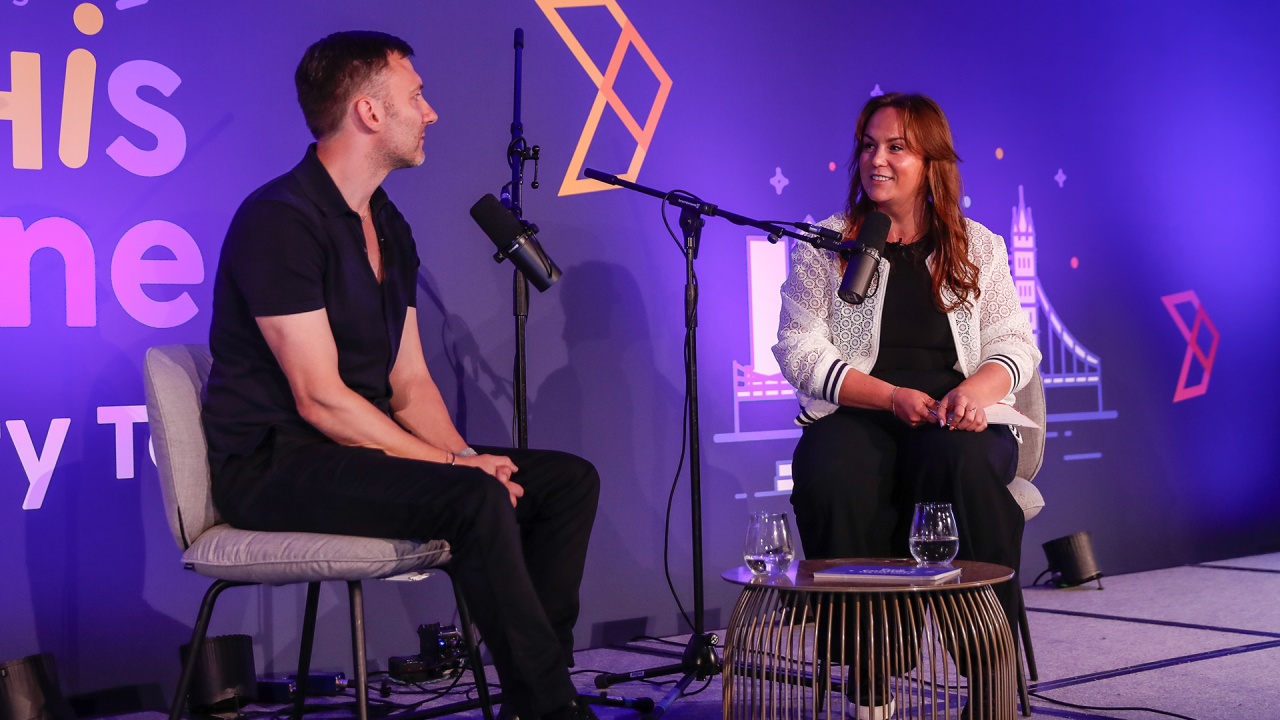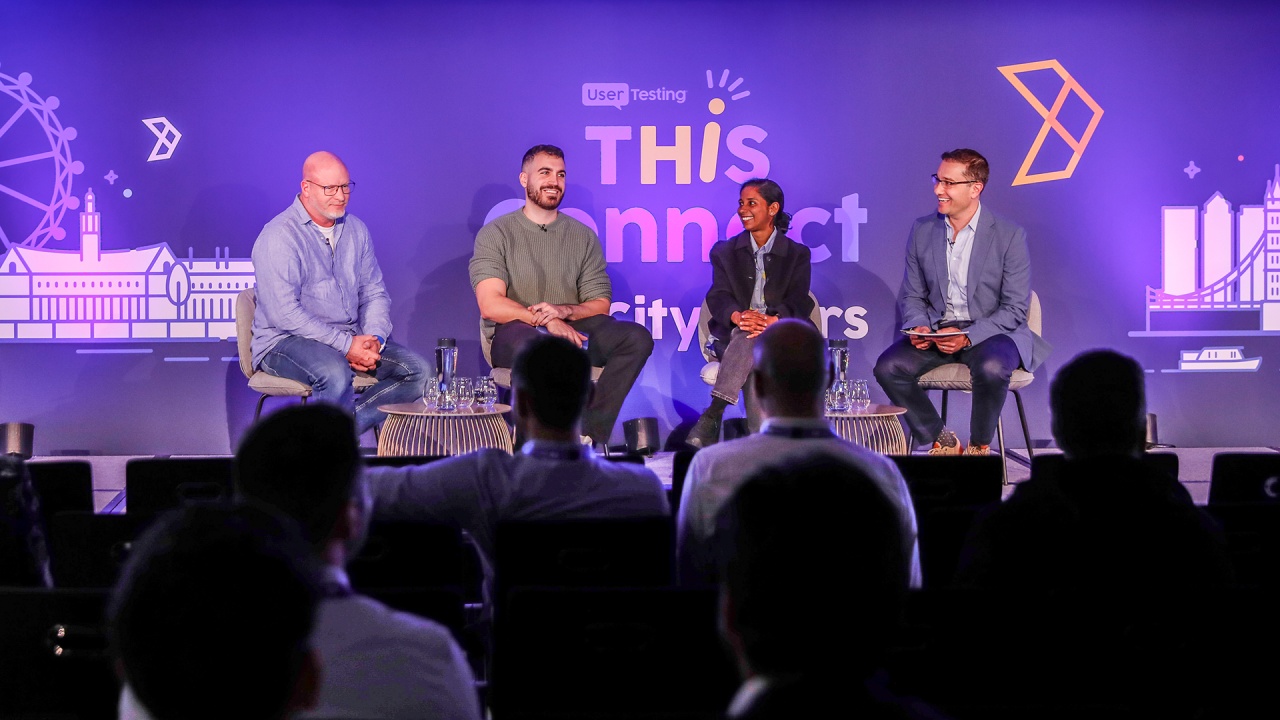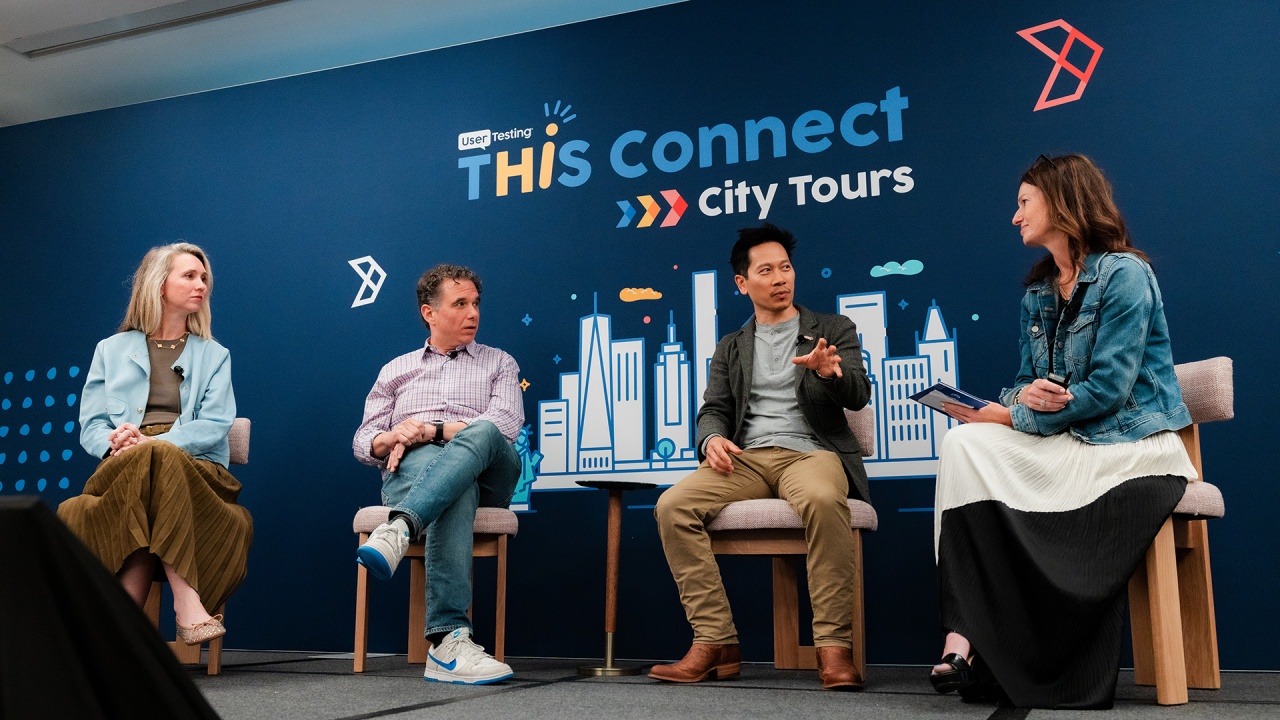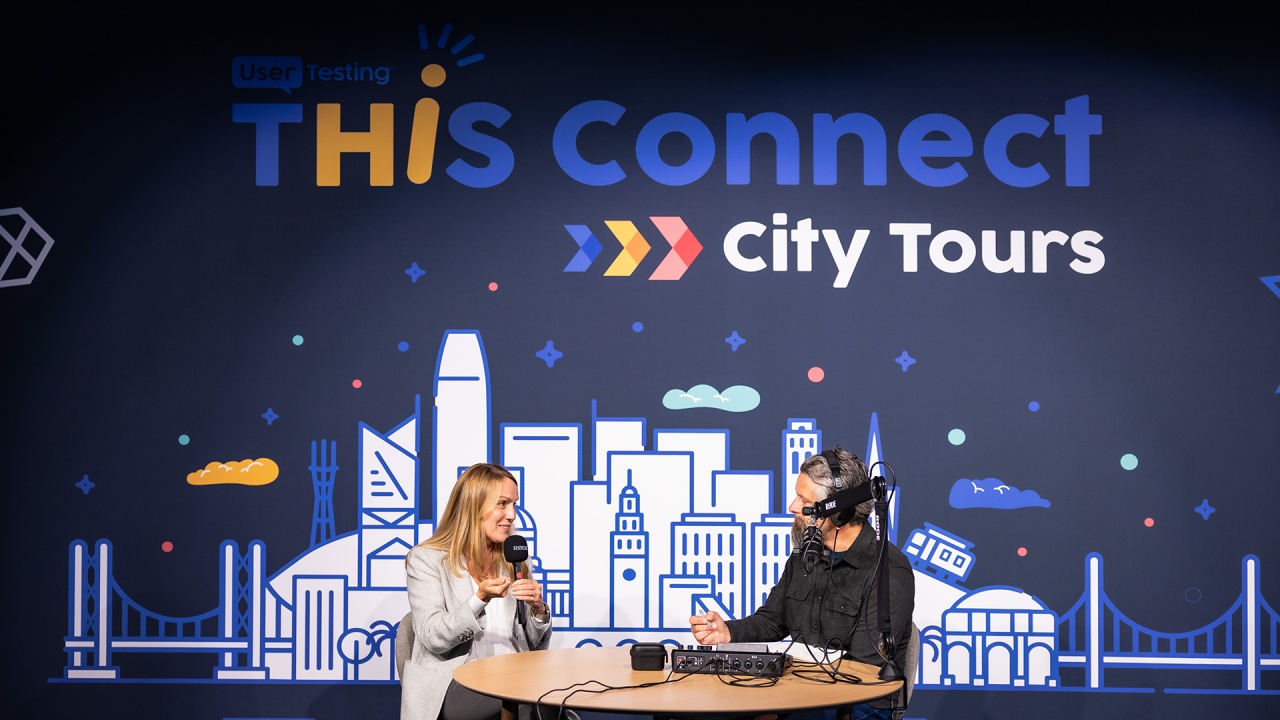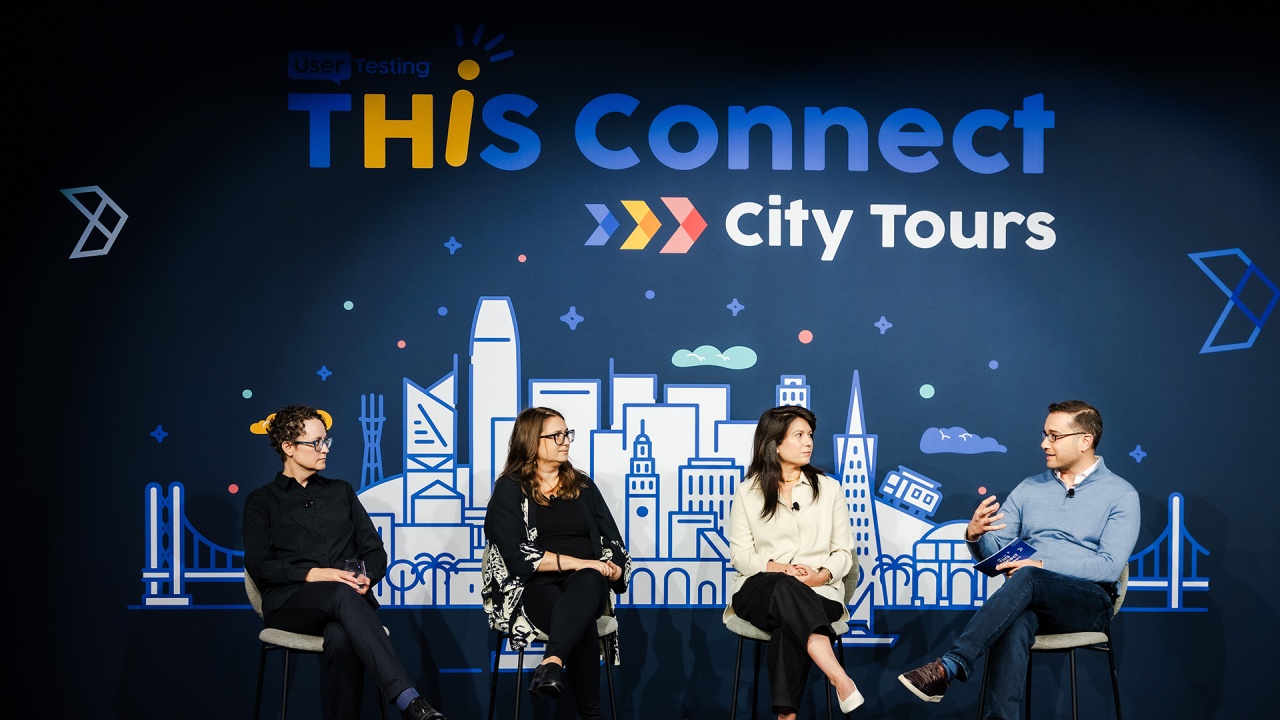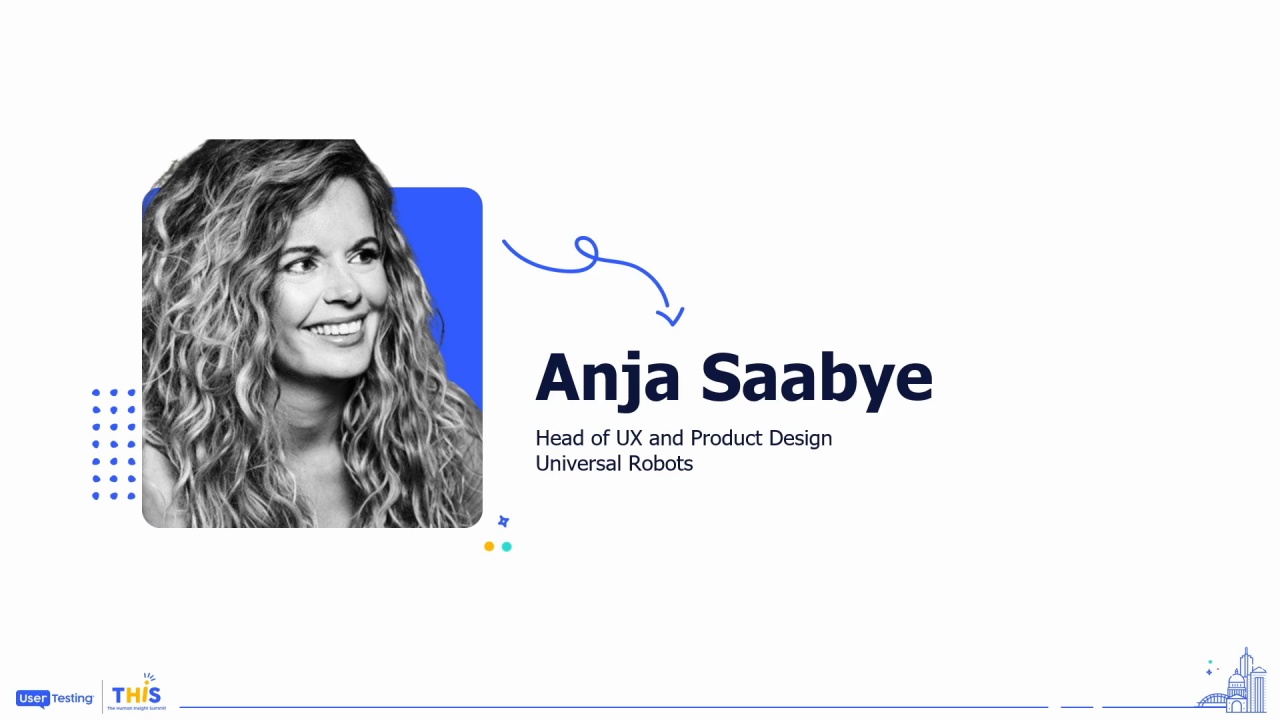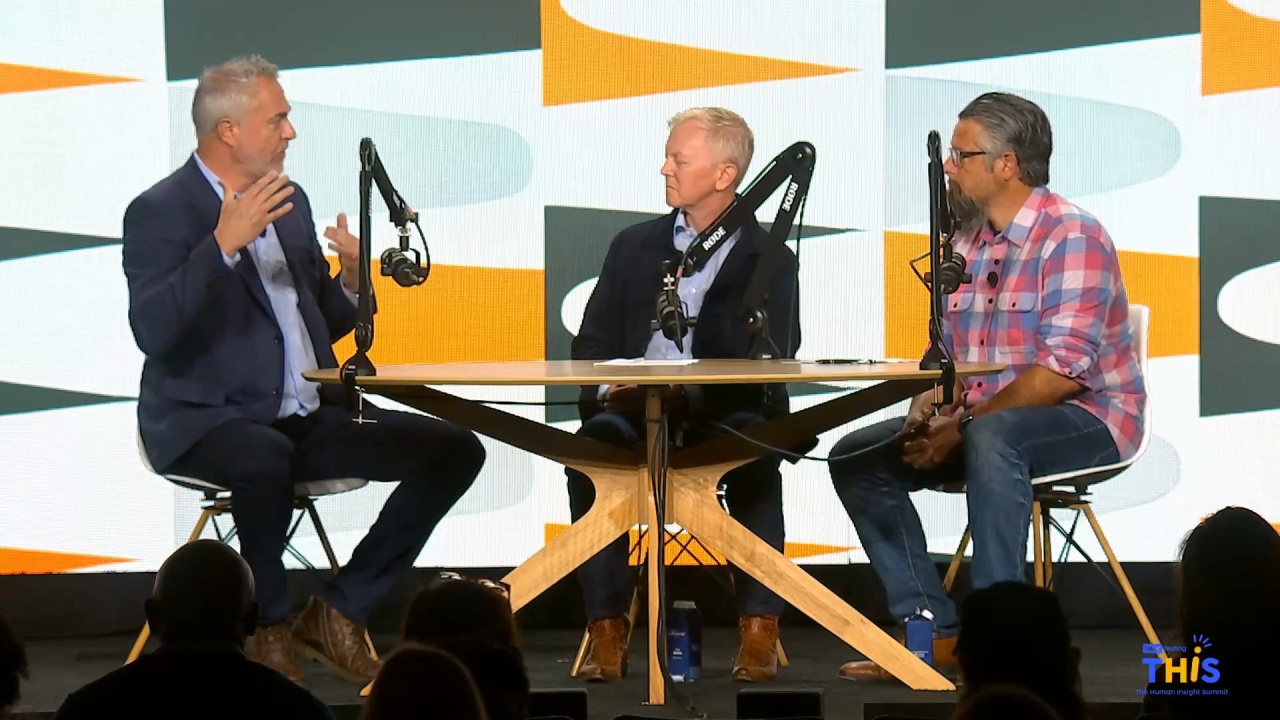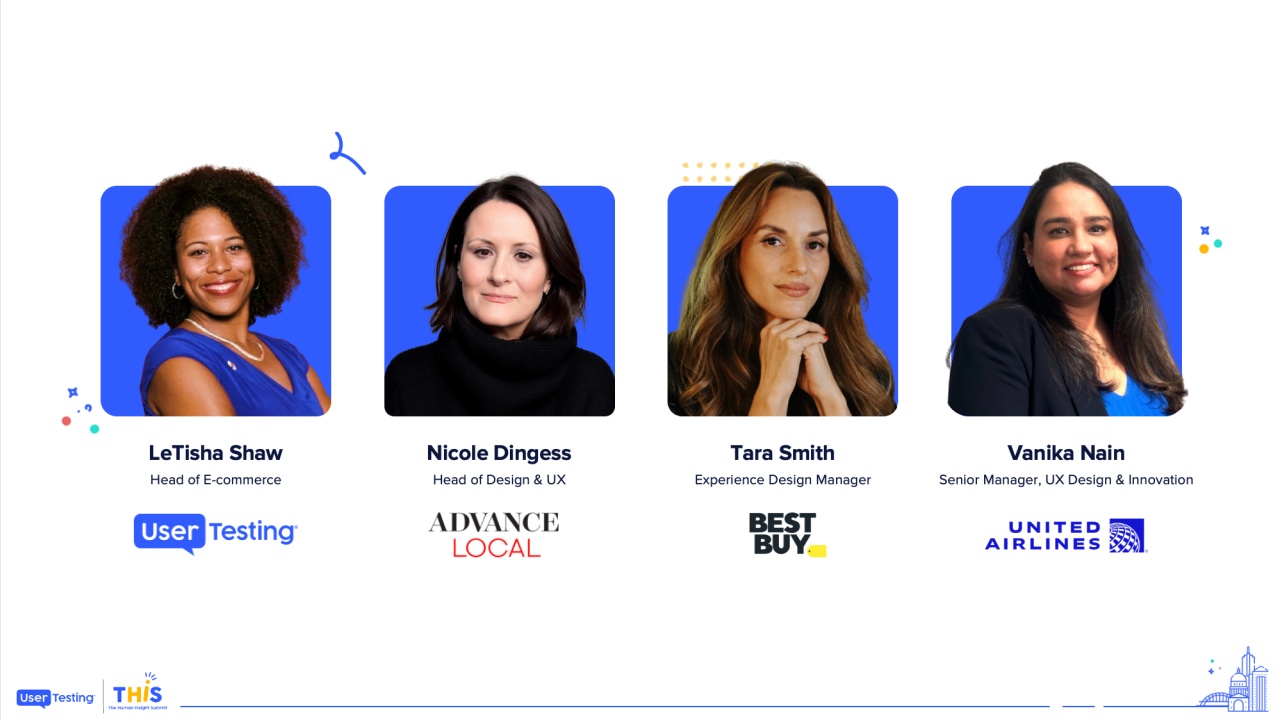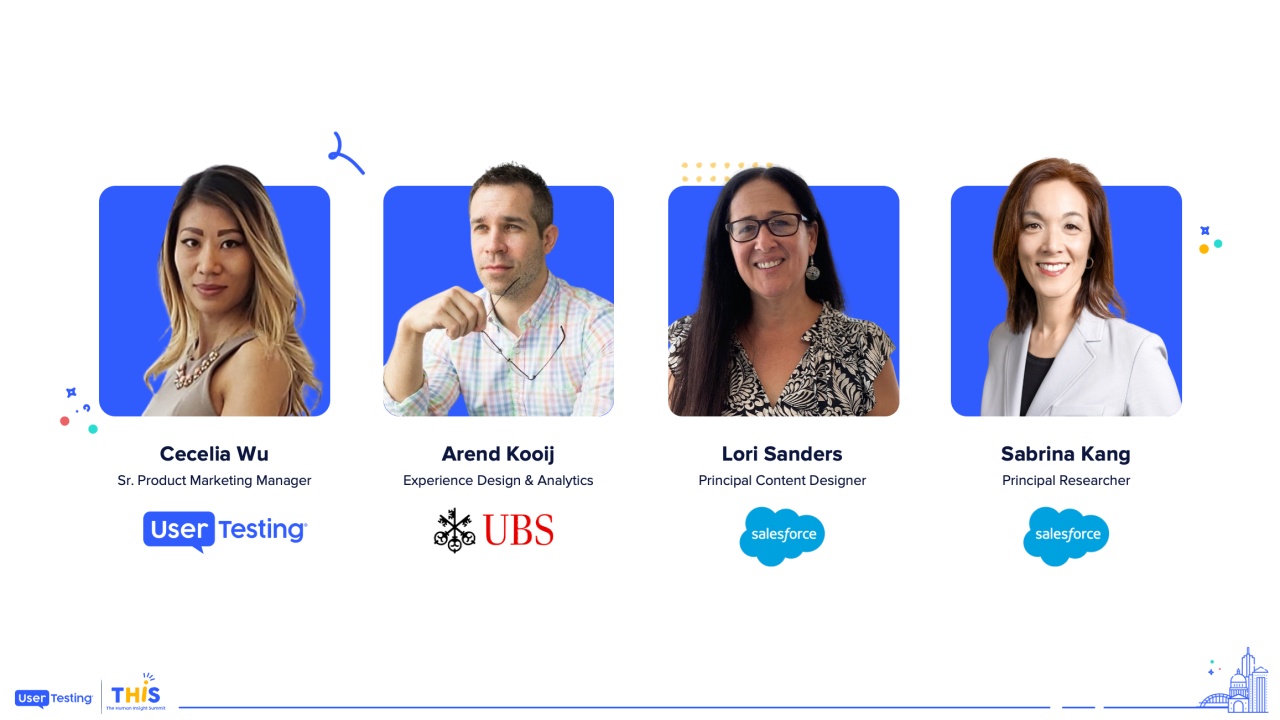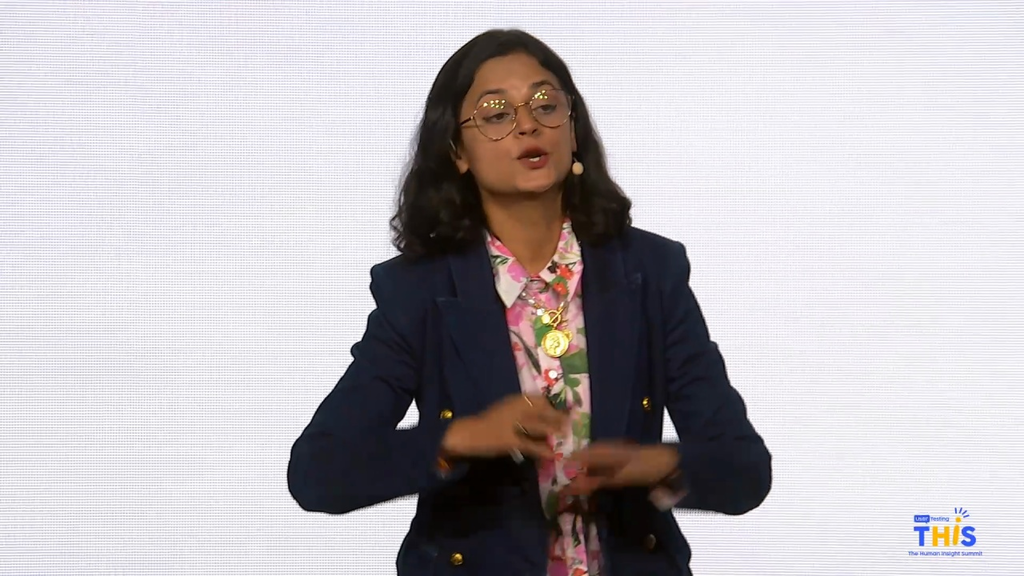
Innovating tomorrow: transforming UX with actionable insights
Aditi Sharma
Head of Research and Design, Amazon
Join Aditi Sharma, Head of Research and Design at Amazon, as she unveils groundbreaking insights from her experience implementing data-driven UX design, research, and product prioritization at AWS, JPMorgan, Walmart, and more. You’ll learn cutting-edge methods for enhancing internal UX processes by automating workflows and leveraging generative AI to streamline decision-making and reduce development effort, resulting in exceptional customer interactions and optimized journeys. Aditi will share actionable tips and compelling case studies of UX innovations that have driven measurable success at AWS. Don't miss this opportunity to transform your UX strategy with expert guidance from one of the industry's leading innovators.
Now please welcome to the stage, head of research and design with Amazon, Aditi Sharma.
It's great to be here. I'm so excited. Thank you for joining me. It's an incredible honor to be amongst all of you, my amazing peers from research and design, and to be joining this conference by user testing. So welcome.
Today I'll be talking about how we are driving innovation at Amazon.
I head research and design, as the intro said, for Amazon, specifically for AWS, where my team and I build over thirty products that help our CFO and his team drive revenue...
Now please welcome to the stage, head of research and design with Amazon, Aditi Sharma.
It's great to be here. I'm so excited. Thank you for joining me. It's an incredible honor to be amongst all of you, my amazing peers from research and design, and to be joining this conference by user testing. So welcome.
Today I'll be talking about how we are driving innovation at Amazon.
I head research and design, as the intro said, for Amazon, specifically for AWS, where my team and I build over thirty products that help our CFO and his team drive revenue growth, profitability, and operational efficiency.
What does that mean? We look at two case studies today from this very complex world of AWS fintech, where I'll share some very interesting frameworks, that'll help you innovate in all circumstances, whether your customers are after you to change something or whether you are proactively anticipating a customer's need to deliver value for them.
So come join me. The the biggest takeaway that I love from this session would be, as you walk out of this room, you have the creative confidence that you, yes, all of you, can innovate no matter the role that you play at work. So let's dive in. This is that mandatory profile page that we are asked to do. So my career has spanned multiple industries. And I've had the honor to positively impact orgs like AWS Now, but previously JP Morgan, Accenture, Target, Cargill, DuPont, United Nations.
So across this journey, some of these leaders really pushed me to think about the connection of research and design with business, operational, and Pratt, I curated a UI UX program that helped the professionals sort of learn this art, and, apply it at their work.
And the frameworks that I share with you today really focus on this approach that we've refined along the years of my journey, but then we've taken and applied at Amazon.
So what is this framework? Let's keep it really simple. It's a very simple three pronged approach. This shouldn't be a surprise to this audience.
Listen, link, and learn.
Listening intentionally to, what our customer is saying. And then where is the industry headed? It's also about those subtle cues that may not be apparent.
Then linking, to draw these actionable insights.
The so what from your research findings. And then continuously learning, whether it's, through episodic research that you do through surveys or through telemetry or, user, in app feedback mechanisms where you continuously learn and challenge the stethoscope.
So let's zoom into each of these stages. So as I mentioned, it starts with that episodic and continuous research. By listening across the stages of exploration, when you are trying to find that perfect problem space, that can help you get out delivery of value faster.
Then, the next focus is really on linking those insights. So again, thinking about behavioral constructs and attitudinal signals that you're coming across.
And then finally, learning continuously. Like, I can't stress on that point enough. Continuous learning is very important. So we do that. And we tie in our UX processes back to four key areas. One, how are we driving business impact?
Second, how are we building on customers' trust?
Third, how are we improving the experience? And yes, we can measure it through CSAT, NPS, and SaaS, but then also, the adoption. So looking at how four of these things come together, it's not just that your customers are adopting the tool, but what do these customers do with these tools becomes critical.
But the same framework of listen, link, and learn can be used in different ways to drive different types of innovation and to solve different types of problems. So, in in in our opinion, and especially through my journey as a designer, as a researcher, I've learned that design process shouldn't be a checklist. It needs to be more pragmatic. It needs to fit to our use cases.
It needs to help us empower the customers or the business that we are working for. So we came up with this idea of, decision trees. So as you go through the process of design, you can start asking very pointed questions to scope out, and to really have a very pragmatic approach to your engagement. So basic questions like, do you have refined requirements?
So in case you don't, you need to have a kickoff with your teams. Do you have the current state that has been defined? If not, you need to go out and learn what your customers are doing and where are they struggling.
Do you have the target state defined? Do you have service blueprints or personas and their jobs to be done?
Have the concepts been validated? Have you gone across the industries to look at what other folks and other peers are doing in the space?
And then finally, guess what? If everything's done, do you have enough specs? Or have you provided that required support to your engineering partners to make sure that the intent of design is being delivered for your customers?
So let's see this innovation, in action. And the two case studies that I'll talk about today will exemplify how we drive innovation at Amazon.
First, it could be reactive. It could be a response that you have to a customer's unmet need. And to exemplify that story, I'll take you to the world of AWS and deal modeling.
The second piece here could also be about the second piece here could also be about proactively anticipating your customer's need, being ahead of the game. So I'll share the story of, a brand new concept, a vision that we have for AWS, where we are creating a centralized finance experience for our customers.
So ready? Let's dive in.
Fixing what's broken.
So innovation can also be about listening to your customers intently and looking through what are those gaps that you can use as a constraint for innovation. So this is that story, and it focuses on our customers' unmet needs during the AWS cloud services deal modeling.
What is deal modeling? To understand that, let me take you to a client meeting that AWS sales is having with Netflix.
So the first conversation is really about understanding the requirements that the client has. And once those requirements have been gathered, the AWS sales team works behind the scenes with the AWS service teams, business teams, and finance teams to finalize, a deal. So they look at how often is And contract that goes back to the customer.
So now the customer gets this amazing deal, added with their usage discounts and their region expansion plans.
And we have a signed contract with Netflix. How easy.
Not really.
So it started on a Monday morning when I got an escalation email from, an AWS VP.
And Adapt is the name of the tool that we use to digitize this deal modeling journey for our customers. So the email read, Adapt takes five to seven times longer to model a customer deal, significantly limiting our ability to prioritize all requests, forcing us to only focus on top tier opportunities and ultimately leading to lost revenue from missed deals.
As you may imagine, it did lead to a fire.
But we had to take a step back. And that's where entered listen, link, and learn framework. We went from observations to drawing insights to delivering value.
So we knew from our customers that they were dissatisfied. We got high severity tickets from them.
But just saying that they were not satisfied with the tool wasn't enough for us. We wanted to go deeper. We wanted to understand what their current workflows were. So we mapped thirteen workflows. We identified some high level actionable themes that the team could go after. And the projected solution is now helping our teams reduce the effort by sixty percent and reduce their time on task by thirty three percent. And you'll soon see in the story why these two metrics were so important for us to track over any other CX metric.
Let's talk about scale. So Adapt processes three thousand deals yearly, valuing over twenty billion dollars And it takes our teams over four thousand five hundred hours yearly to to work on these deals.
So again, it is driving value, for Amazon. But the time it takes for us to complete these deals is is quite immense.
So the first step for us was to start spending time with users, start shadowing them. So we conducted digital shadowing sessions with them to map their tasks across tools. We understood what was their click rate, what was their time on task. And we uncovered that with every sitting, they take about an hour and a half to complete a custom deal.
Qualitative insights helped us through interviews that we conducted, but also through in app feedback mechanisms.
We started to now uncover these themes across the four steps of request creation, configuration of scenarios or services, and creating this overall profit and loss summary at the end for the client.
We saw that our customers struggle with repetitive data entry, system latency, and rigidity in our workflows.
So tying these insights was the next fun part for our team. Now we had actions. We had emotions through our interviews. We had clicks and time on task studies as well from digital shadowing. We mapped all of these data points together to create this consolidated journey that helped all of our teams align on a shared solution statement.
Enable productivity, flexibility, and integration at scale.
Users should be able to model deals easily and efficiently.
Users should be able to work on multiple use cases across teams. So our workflow should be very flexible.
And workflows across teams should also be integrated so that there is transparency and efficiency overall.
The team created over two hundred UX screens to work with our customers to refine the narrative and to drive value for our org. So let me bring that to life with a couple of new features that we introduced and features that we optimized along the way. So the first thing that we did was to introduce these four cross connected functional workflows across our business groups. And we connected them through notifications. And again, building a notifications framework for an org like AWS can be quite complex. So we are still on that journey.
But being very focused on our approach and identifying new users where we wanted to target helped us reduce those click rates from one hundred and seventy eight to complete a custom deal down to two and our average time on task to less than a minute.
The next thing we did was to really go deeper into the processes that these teams had. So not just the superficial UI, but also looking at what steps do they have to complete.
And as we did that, we revisited the pricing and margin analysis techniques. We integrated more with downstream systems. And ultimately, we reduced the effort to do this pricing analysis, introducing new UI features, even like a freeze pane, which may seem very obvious to many designers in the audience today. But for us, it was a discovery because we now knew that customers had to go to multiple Excel documents, come to Adapt, and look at these tables just to make better pricing decisions. Now bringing them together was helping them be more efficient.
Earlier, our customers were creating a deal per customer request.
So again, that narrative had to change. We started to think about how can we drive efficiency by allowing our users to enter multiple data points in one go. So imagine if I'm working on Netflix, I get to input all of the Netflix profile information in one go instead of repeating it across multiple deals that I need to create for them. So as we combined it, we reduced the input time by fifty percent.
This may be familiar to those of you who work with agile product development, Kanban boards. So again, keeping it very simple, we brought multiple teams together to share scan and board kind of experience, where they could start to see the status of a request and then alert those users involved in the process to move along if something was stuck.
It wasn't all about building new features. It was also about revisiting the current state. So we optimized our workflows and we made them non sequential.
Earlier, our users were stuck to completing one step at a time. And then, they were also waiting on information from other teams to to complete those steps. We introduced not just that flexibility, but we also introduced tagging of form fields so that they could reach out, to other team members and gather the needed information.
Finally, we are imagining what's next for Adapt. And we are leveraging Gen AI and assisted modeling to craft potential deals that optimize pricing solutions, for our AWS customers and, in the process, positively impact the revenue growth for Amazon and also for its customers.
The excitement from the VP was loud and clear.
These efficiency gains will allow us to boost our sales capacity and handle more customer deals effectively, giving us the ability to focus more on opportunities that drive our businesses' top line growth.
What was that top line growth? So the impact the workflow revamped is projected to unlock fifteen hundred hours in sales capacity. That will free up our teams to unlock and pursue more than six point five billion dollars in yearly revenue.
So again, innovation can just be a response to a very distressed customer's need, but you can really turn a constraint to something creative and exciting for your customers.
With that, I'll move us to our next case study which focuses on being proactive by anticipating a customer needs before it's become known. So in Amazon, we like to call it dogs not barking.
But what what we hear, a lot, and this was something that I heard. I've been with Amazon now, almost two and a half years. And this was week one, and I got on this intro call with, a finance manager who works with our CFO. And, he talked about how each tool owns a specific area and purpose. So his team has to navigate over twenty tools to manually consolidate financial reports and insights.
So him saying that wasn't enough. We had to go deeper. We had to look at the research broadly. So we looked at his team's overall process. We looked at how they conducted month end close and recognized that through our mapping of key milestones, tasks by personas, their touch points, overall user sentiment, we learned that they have fifty eight very unique steps that they have to complete over ten hours, just trying to find and collate information from these different service portfolios.
So our pitch was really simple. Let's go from these twenty seven applications to one application.
Again, sounds so easy.
But this is where our listen, link, and learn framework came in. This was just a hunch. This was, again, an insight that was driven by a comment from this AWS finance manager, one of many. Right?
So how do we see that hunch and how do we take that forward? And again, as researchers, as this community, saying something, hey, go with your gut might not be the most proper thing to say, but really thinking about data differently. Thinking about sometimes when you see where the industry is headed, what your customers are saying about the effort that they're spending. For us, it was pretty significant, two point nine on five.
And we learned that we have to start focusing on those key jobs to be done. So we identified and mapped around five customer experience outcomes that I'll share with you later in this deck. And then finally, our projected solution through co creation workshops and multiple usability reviews and other cross functional feedback sessions, we learned that we have the ability to reduce our customers' workflow time by ninety percent every month, just the manual hours they're spending on these report building experiences.
And we can improve the accuracy of every query that they are sending to us with improve the accuracy of every query that they are sending to us with a huge margin, to ninety nine percent.
So this was ultimately the value prop that we were able to drive.
But let's let's go back and let's look at how the story really came to life. It didn't happen on day one. It wasn't that, hey. I entered the boardroom and I said, here's the amazing idea for Uno, our AWS finance system, and it'll solve all the problems.
No. It was about establishing value. It was about, growing our influence. And it was also about being persistent.
So even though it started with a hunch, the Uno experience has now become key to our org's three year vision.
Incidentally, Uno is also going live in two days, so I'm really excited about that.
So again, your innovations can really come to life.
To make sure that you also see the journey that we've taken, we took a memory down, a journey down the memory lane, and we we went looking through all of our Figma explorations to to come to the real realization that we've done more than thirty iterations of Uno. The first one started with a very simple hunch where we wanted to consolidate these purpose built workflows into one experience. One of the surveys that we'd conducted with our teams helped us also build on this narrative.
It uncovered that more than sixty percent of our users have to use multiple tools to complete their workflows.
So we started to hone in on modules that would fit our target states, personas, jobs to be done. And that helped us pick and choose the right features across products that would work well together.
This was also the starting of our working group where we identified sponsors. We identified our partners who would work closely with us to define the Uno vision.
We were under research hibernation. We came out to to get more traction with the leadership when Gen AI was was coming around. And we reimagined the Uno experience, looking at Gen AI to drive proactive insights, to allow us to, get responses to our queries, and to also be ambient within our experiences. So we could do things like, hey, convert this table to a database. So now Uno wasn't just an aspirational product. It was a product that would drive productivity and efficiency for our users.
As the Uno project grew, a collective understanding emerged. Stakeholders started being a part of our concept co creations, roadmap discussions, and other workshops that they would host with other partner teams. So now we had not only sponsors, but spokespeople who would go and talk about Uno with other teams. We incorporated features like, actionable insights that were available readily within the Uno interface because, an experience like a month end close is so driven by commentary, that leadership provides. So how do we bring those comments and leadership feedback closer to the users as they are going through the workflow?
Just through these updates, we were able to improve the perceived customer effort and perceived customer effort being the customer panel who we were using as our pilot group. And we improved the customer effort from two point nine to three point eight. Again, identifying that pilot group becomes absolutely critical.
As I just mentioned, we are going live with Uno in two days. And as we define the MLP, for us, the focus was productivity, was efficiency. So we had improved the query response times with Gen AI and with other, better integrations across our data systems to derive authoritative sources of truth when it comes to metrics. We were building customer trust already.
And through visual storytelling, multiple docs, typical to Amazon that we wrote to support our investment, we did get the green light from leadership.
So some of the key features I want to call out since today's focus is on actionable insights, one of them being, of course, Gen AI that helps you, drive efficiency.
But also looking at proactive alerts that were not just coming from notifications driven by a timeline of events, but also notifications that were triggered by an anomaly detection. Let's see that maybe one of your customers' usage has exceeded a threshold. That's an opportunity for revenue growth. So how can we proactively communicate with our users when there's value to be had?
And finally, we want our users to control their experience, to interact with our systems, to build views that will help them get to better decision making faster.
So let me cue a video and show you guys how Uno is working. This is the interactive dashboard. These metrics are coming from our authoritative sources of truth. To build that experience, users can add a widget.
From our widget marketplace, they can trigger Jarvis, which is our Gen AI assistant for Uno, and choose the data sources that they need to become more specific as we start building and bringing our data sources together.
Okay. So what's next for us?
As we move forward, with design led initiatives like Uno, we are driving org level change.
Our three year vision is to focus on five key themes. One, improve controllership.
Second, improve data analysis, make our users more efficient. Connect experiences, streamline workflows, and accuracy.
As we think about those twenty seven applications, the data that's coming into them is also pretty unique. So how do we build trust?
Through accuracy.
One of the main focuses for this year and for our coming year is on connected experiences. And Uno is central to this vision with its four tenets of transparency, trust, personalization, and its focus on productivity.
The journey is just starting. With Uno's MLP out of the way, with the long term vision ahead of us, we've started to lay the groundwork for a very sustainable enterprise system architecture strategy. So it starts with our CXOs.
But then we build on top of that with our data layers so that we have commonalities in the numbers and consistency in the numbers across our systems.
Then we are building services on top of that, thinking about notifications and permissions so that the right parties are seeing the right information at the right time.
We are building insights so our users can become more efficient and effective with their decision making so that they start seeing now some alerts around revenue growth, around operational efficiency, or improving free cash flow or profitability.
Modules are being built so that we can decouple, fasten, and scale the growth of Uno, multiple teams building these modules simultaneously or leveraging them at the same time.
And finally, these tenets are helping the research and design team to create experiences that are intuitive, that are informative, trustworthy, and connected.
So the same framework of listen, link, and learn can be also used proactively to drive innovation and move everyone towards a shared vision.
I know we have five minutes, so I'll wrap up.
Observe, the unspoken.
Go beyond the stated needs. Look at opportunities of spending time with your users, really immersing yourself in their natural environments. That will really give you the insights that you need, to drive innovation, both reactively or proactively.
Tell the story. Use visual storytelling skills to bring everyone together on the same page.
Yes, like I said, we did more than thirty iterations of Uno. Every time we presented a doc at Amazon, we had a prototype to go with it. Think big and start small. You can have a monumental vision, but don't keep your users waiting. Deliver value incrementally. Go fast.
Lead through influence.
Create leadership earns trust. It does not command. It brings everyone together. Be that uniting force.
And persist with purpose.
Use data and logic. Don't just persist blindly.
Think about how you can drive change by establishing value, growing your influence, and never saying never.
Remember, innovation starts with you. Let's amplify our impact as a community with actionable insights.
And let's innovate a better tomorrow for all. Thank you for listening to me.
I I can take Yes, I can take one question.
Hi. So, I was wondering when you said it was deploying in two days, and it's been, what, almost three years now. Is that correct?
Two and a half. Yes.
Yeah. So, you have been putting something out there. Okay. Good. It looked like it in the last one. So what how many reports are they going through right now currently?
So they're starting with one.
Well, that'll be in two days. So what do they have now?
Oh, yes. So we have a whole list of reports we wanna go after, processes we wanna go after, even though we are starting with the most recurring one being the month end close. But we also have other reporting types that help them do better forecasting, planning, compare P and Ls to deal retrospectives. So even adapt the product I talked about also has a way into Uno, because now you're looking at a P and L.
What actually happened versus what did you sign as a deal with your client? So looking at that comparison also are things that we want to bring in. Besides this, I think communication and collaboration is also very key. So connecting different team members through commentary.
Right? Like, if you're looking at a report and you were the CFO, you have a question. How does it go down to the analyst? And how can we be more pragmatic in a way where as the changes are being requested, there is somebody doing them live and then the connection is happening?
So yes, we are starting with one. But we have a whole backlog that we are going after.
Every quarter, we want to keep releasing new reports that customers can come and leverage.
Yeah, sure.
I think there's one in the back that oh, there.
Hey there.
While you're working on the Adapt platform, I know it was like a redesign. Were there any technical constraints? And if so, like, how did you go about solving for that as well?
Yeah. Great question.
I think the entire project started because of technical constraints.
When When I joined the project, you know, the engineering teams had taken it quite far. So we were tied to certain design systems. We were tied to certain choices, even in terms of the grids that we were using within the experience. So it's been a journey of moving the platform to a more elevated design system that gives features like accessibility out of the box.
So we want to make our products more accessible. So yes, so we work with engineers and we say, yes, this is available. Let's start adopting it. And let's start driving better practices for the org.
So that's one area that's really helpful. But the second piece that we're also doing is a program called Common Patterns. And that's something that the research and design team leads, where we focus on leveraging value for not just one product, but for multiple products. So Adapt, in fact, became the genesis for the data grids and some functionalities like copying and pasting from Excel.
So that may seem very mundane, but it's very hard to do across systems.
So we introduced new features like this. So constraint almost became a part for us, a part of our design process to engrain innovation and be more creative with our choices. We are also really good friends with the engineering team. That helps. So driving that connection and being close to that community is important, because I learn so much from our cross functional partners every day.
Thanks.
Yeah. Okay. I am getting the signal. This is all the time I had. Thank you again for listening to me.
